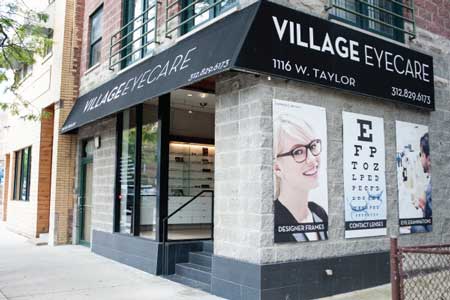Leading Eye Doctors in Andalusia: Schedule Your Consultation Today
Leading Eye Doctors in Andalusia: Schedule Your Consultation Today
Blog Article
Understanding the Different Vision Correction Procedures Available for Clearer Sight
In the realm of vision correction procedures, a wide variety of alternatives exist to address refractive errors and offer people with clearer view. Allow's check out the ins and outs of these procedures and shed light on the path to accomplishing enhanced vision clearness (Cardiologist Andalusia).
LASIK Surgical Procedure
LASIK surgical procedure is a typical refractive procedure utilized to fix vision problems such as farsightedness, nearsightedness, and astigmatism. This surgical technique, which represents Laser-Assisted in Situ Keratomileusis, intends to improve the cornea to enhance how light is concentrated on the retina, ultimately enhancing vision clearness. During the procedure, a slim flap is created on the cornea, and a laser is made use of to get rid of specific amounts of cells to reshape it properly. This reshaping enables for light to be properly focused onto the retina, correcting refractive errors.
One of the primary advantages of LASIK surgical treatment is the fast renovation in vision experienced by people. On the whole, LASIK surgical treatment is a popular selection for individuals looking for a long-term service for their vision troubles.
PRK Procedure

PRK is a suitable option for people with thin corneas or those at a greater risk of eye injuries, as it does not involve creating a corneal flap. The recuperation process for PRK is a little longer contrasted to LASIK, as the epithelium requires time to restore. People might experience discomfort and blurry vision for a couple of days adhering to the treatment.
In spite of the longer recuperation time, PRK can produce excellent lead to vision renovation, making it a beneficial choice for those who might not be suitable candidates for LASIK surgical treatment. - Eye Center Andalusia
Implantable Lenses
As opposed to PRK where the cornea is improved directly, implantable lenses use another technique for fixing vision by inserting man-made lenses inside the eye. This procedure is specifically advantageous for individuals with high degrees of nearsightedness, astigmatism, or farsightedness that may not appropriate candidates for laser surgical procedures like LASIK or PRK.
Implantable lenses, likewise called phakic intraocular lenses, work by supplementing the eye's natural lens with an artificial one. These lenses can be placed in front of the all-natural lens (former chamber) or behind the iris and before the natural lens (posterior chamber) By adjusting the power and positioning of these lenses, ophthalmologists can successfully remedy refractive mistakes and enhance visual skill.
One benefit of implantable lenses is that they are exchangeable and detachable, providing flexibility for future modifications. Nevertheless, similar to any kind of surgical procedure, there are risks involved, such as infection or cataract formation. People considering implantable lenses should speak with an eye treatment specialist to establish the most suitable choice based upon their specific demands and eye health.
Corneal Rings

The treatment for inserting corneal rings is minimally intrusive and fairly fast, typically performed as an outpatient procedure. During the surgical procedure, the eye doctor makes a small laceration in the cornea and inserts the rings at a particular depth. When in position, the rings aid to reshape the cornea, providing a smoother surface area for light to get in the eye, which can lead to more clear vision.
Corneal rings are considered a reversible procedure, as they can be eliminated or changed if necessary. While they may not entirely eliminate the requirement for glasses or get in touch with lenses, corneal rings can considerably enhance vision top quality and overall aesthetic comfort for people with keratoconus or various other corneal irregularities.
Refractive Lens Exchange
Complying with the correction of corneal abnormalities with procedures like corneal rings, another vision correction technique that can deal with refractive errors is Refractive Lens Exchange (RLE) RLE is a procedure that includes replacing the eye's he said natural lens with an artificial intraocular lens (IOL) to fix refractive mistakes such as nearsightedness, presbyopia, and farsightedness. This treatment is particularly helpful for individuals that might not be suitable prospects for procedures like LASIK or PRK due to elements such as thin corneas or high refractive errors.
Recuperation time for RLE is reasonably fast, and people can anticipate better vision soon after the procedure. As with any surgical treatment, possible dangers and difficulties exist, so an extensive examination with an eye care professional is essential to determine if RLE is the right vision improvement option.
Final Thought

In the world of vision improvement treatments, a wide range of options exist to resolve refractive errors and give people with clearer sight.LASIK surgical treatment is a typical refractive treatment used to correct vision troubles such as astigmatism, nearsightedness, and farsightedness.While likewise an usual refractive procedure, the PRK (Photorefractive Keratectomy) technique varies from LASIK surgical treatment in its strategy to correcting vision issues.Following the modification of corneal abnormalities with treatments like corneal rings, one more vision improvement strategy that can address refractive errors is Refractive Lens Exchange (RLE) LASIK surgery, PRK procedure, implantable lenses, try this website corneal rings, and refractive lens exchange are all options that can resolve different vision issues.
Report this page